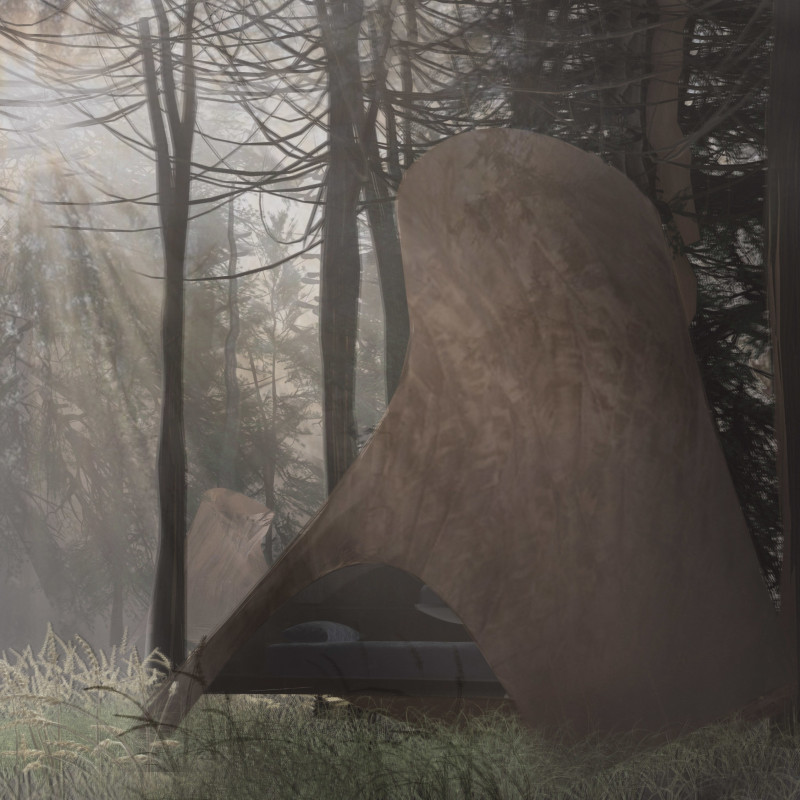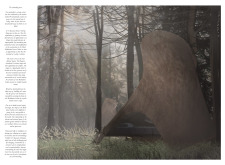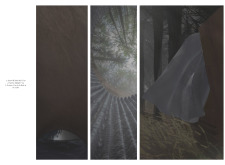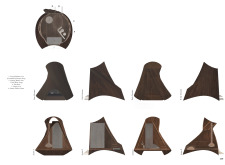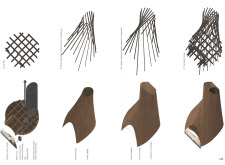5 key facts about this project
The Silent Meditation Forest Cabin is set in a calm natural environment, designed for quiet reflection and meditation. It integrates ideas from meditative practices with an exploration of geometric forms. The design follows the principles of Vipassana, which promotes seeing things as they truly are. This approach encourages visitors to connect with both their inner selves and the nature surrounding them.
Geometry and Structure
The design features circular and hyperboloid shapes, which provide efficient structural benefits. The hyperboloid base contributes to stability, while the use of circular forms ties back to historical ideas of divinity, commonly found in ancient architecture. The cabin is built using straight wooden beams instead of curved ones. This choice enhances clarity in the structure and supports its functional purpose.
Materiality and Sustainability
The primary building material is wood, which is known as the oldest construction material in Latvia. The design includes recycled wooden veneer scraps to cover the cabin's frame, extending the life cycle of the material. This aspect highlights a dedication to sustainability, reflecting current ecological practices in building design.
Spatial Relationships
One of the notable features of the cabin is its blurred boundaries between inside and outside. The summer garden window illustrates this interplay, shifting between an enclosed area and an open space. This allows for a smooth interaction with the landscape, encouraging a deeper engagement and fostering moments of contemplation.
Meditative Zones
Inside, the layout carefully organizes areas for meditation and reflection. Each zone is designed to support focused activities while enhancing the experience of those within the space. The arrangement promotes an easy flow from one area to another. This design approach aligns with the values of Vipassana and invites individuals to connect with both their thoughts and the nature around them.
Light filters through the cabin, creating inviting spaces that encourage quiet moments. The combination of geometric forms and sustainable materials forms an atmosphere conducive to mindfulness, allowing each visitor to experience tranquility and a deeper connection to their surroundings.


